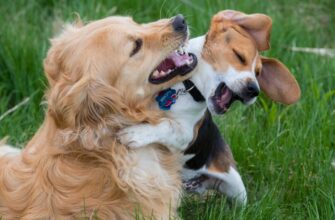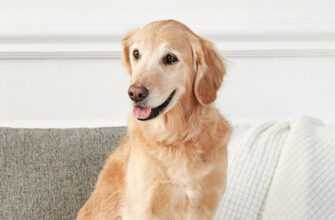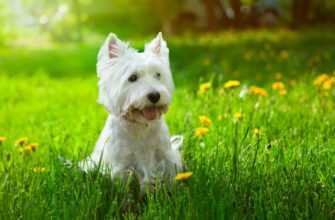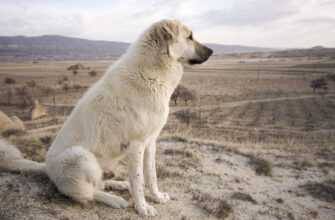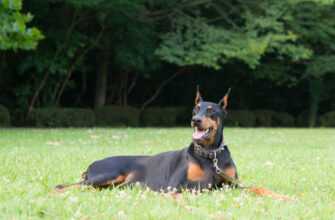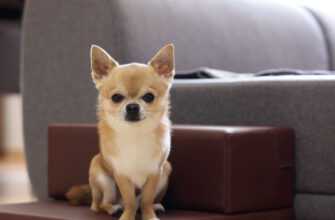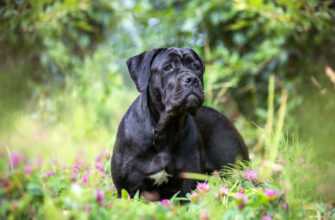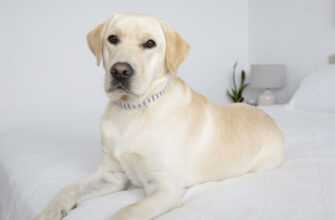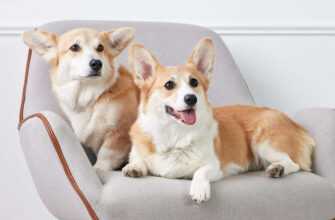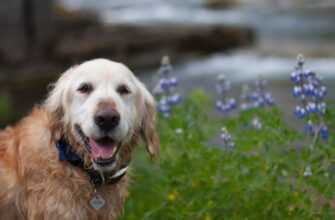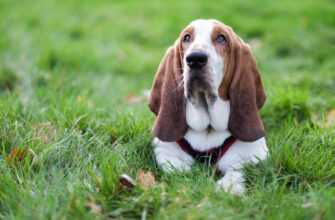German Shepherds are famous for being wonderful companions and trusty service dogs, but can the same be said for dwarf German Shepherds? What exactly is a dwarf German Shepherd? Are they healthy dogs?
All of these questions and more will be answered in this comprehensive guide. The only thing you need to know right away is that dwarf German Shepherds are dogs with an interesting story. There are some things about these dogs that will surely surprise you.
If you are looking to pick up a dwarf GSD anytime soon, make sure to read this guide all the way through. This guide tackles everything from their genetics and disposition to how much they cost and where to find them. Read on!
What Is a Dwarf German Shepherd?
A dwarf German Shepherd is a purebred GSD that has inherited a recessive gene that causes pituitary dwarfism. They are noticeably shorter than regular German Shepherds and they are prone to some health issues. Despite their condition, dwarf GSDs are lovable dogs.
Dwarf GSDs are typically associated with the faulty breeding techniques employed by backyard breeders or puppy mills. Their unique genetic condition is due to their parents being carriers of a certain type of gene.
Since backyard breeders and puppy mills do not impose strict health screening tests for their parent dogs, dwarf GSDs are common in their litter.
In a report from Dwarf German Shepherds UK, it was stated that dwarf GSDs account for 20% of the entire German Shepherd population.
It is easy to spot a dwarf GSD. In fact, signs are evident as early as their first few months of age. However, keep in mind that dwarf German Shepherds are entirely different from miniature German Shepherds.
Are Dwarf German Shepherds Purebred?
Despite their short stature, dwarf German Shepherds are purebred. Through and through, these dogs share the same genetics as regular GSDs. You can have a dwarf German Shepherd genetically tested, and with certainty, it will pass as a purebred GSD.
The main difference is that dwarf GSDs are carriers of a gene that causes canine pituitary dwarfism. These dwarf dogs can only be born if both their parents are carriers of this gene.
In an interesting report from Vice News, an experienced German Shepherd breeder, Darien Northcote, was once surprised when one of his dogs gave birth to a dwarf GSD puppy. Despite breeding only purebred GSDs since 1989, Northcote still stumbled upon a dwarf pooch!
That said, unless breeders pre-screen their parent dogs, there will always be a chance of having a dwarf GSD puppy in their litter.
Dwarf German Shepherd vs. Miniature German Shepherd: Are They the Same?
Dwarf German Shepherds are purebred GSDs with dwarfism. On the other hand, miniature German Shepherds are crossbred dogs that are smaller than regular German Shepherds.
Usually, miniature GSDs are born from the cross of a German Shepherd and a Poodle or a Border Collie. However, there are also instances where miniature GSDs are bred by crossing GSDs to Golden Retrievers, Corgis, Siberian Huskies, Pugs, Yorkshire Terriers, and others.
The picture below shows a mini GSD which is a mix of an Australian Cattle Dog and a German Shepherd:
As evident in the picture, dwarf GSDs and miniature GSDs are completely different dogs. This confusion only stems from their striking similarities in terms of size and appearance. But their similarities end there.
Miniature GSDs are generally healthier dogs than dwarf GSDs. Aside from their genetic makeup, their health differences dictate most of their differences. Dwarf German Shepherds are likely to have visible issues on its body such as alopecia and small testes. Meanwhile, miniature GSDs are usually free from all these.
Another thing to note is that if you compare these dogs closely, you may notice that some dwarf German Shepherds will slightly resemble the appearance of a fox.
Take a look at this dwarf German Shepherd and his fox-like features:
What Does a Dwarf German Shepherd Look Like?
Except for their stature, dwarf German Shepherds look very similar to regular German Shepherds.
This is especially true when you compare the coat color, muzzle shape, and ear shape of a dwarf GSD to a regular GSD. However, there are still many clear physical signs that distinguish one from the other.
Pituitary dwarfism in German Shepherds is accompanied by some peculiar health issues. These health issues develop at different stages of the dog’s life. As a result, as these dogs grow older, physical differences become more pronounced.
Let’s examine how pituitary dwarfism affects the physical appearance of dwarf GSDs at different stages in their life.
Two to three months old
During this stage, there will be a noticeable slowing down in the rate of growth of a dwarf German Shepherd. Although they might still be around the same size as other GSDs in their litter, they will typically be left out, size-wise, around this age.
Unless you want to specifically get a dwarf German Shepherd, it is recommended to shop or adopt dogs that are older than three months old. This way, signs of dwarfism, if present, are more evident.
Three months to one year old
Around the age of three months old to one year old, dwarf German Shepherds will be noticeably shorter than other puppies in their litter. They will also retain their soft puppy coats for far longer compared to their siblings.
Once the shedding of puppy coats occurs in dwarf GSDs, the process will be noticeably uneven. These dogs will typically retain voluminous amounts of coat on their heads and hocks. Similarly, the puppy teeth of dwarf GSDs will fall out during this time. However, their adult teeth will develop later than usual.
In fact, there are even cases where some dwarf GSD puppies do not develop any adult teeth at all. In addition to these, signs of overly blackened and scaly skin will also begin to show around this age.
Moreover, gender-specific issues will also show around this time. For male dwarf Shepherds, reproductive organs will be smaller than normal. On the other hand, for females, the first heat cycle is usually delayed or even prevented totally.
One to four years old
From one year old onwards, the physical differences that set dwarf GSDs apart from regular GSDs become more obvious. Some of the major changes begin with issues in their spine. Spinal issues in dwarf GSDs typically target the first two vertebrae in their cervical spine. Unfortunately, these issues cause excruciating pain for the dog and can sometimes lead to paralysis.
Moreover, due to their dwarfism, the so-called “growth plate” at the top of their leg bones will take longer than usual to fully close. As a result, despite their limited full-grown size, dwarf GSDs will continue growing at a slow and steady rate.
Around this age, most dwarf German Shepherds also experience severe alopecia. This causes the majority of their coat to fall off, leaving a big portion of their skin exposed.
It is also worth noting that the proportions of a dwarf German Shepherd, for the most part, are on par with normal. This means they will appear as a scaled-down version of a regular GSD rather than a dog with disproportionate body parts.
How Big Do Dwarf German Shepherds Get When Fully Grown?
German Shepherds with dwarfism typically grow up to 10 to 20 inches in height. On the other hand, these dogs usually range from 35 to 50 pounds in terms of weight.
Dwarf GSDs are very similar in size to most miniature German Shepherds, especially ones with a Poodle or Border Collie parent. As a matter of fact, breeders with bad intentions will try to pass a German Shepherd with dwarfism as a miniature GSD or a purebred “small” GSD.
For reference, full-grown dwarf German Shepherds are about the same size as regular five-month-old German Shepherds. However, take note that these numbers are only meant to give you a rough estimate of how big dwarf GSDs get. Individual measurements will vary for every dog.
Dwarf German Shepherd Genetics: How Is Dwarfism in German Shepherds Passed On?
Pituitary dwarfism in canines is mostly genetic. This means that it is acquired entirely from the genetic material that gets passed on from parent dogs to their offspring.
To better understand how dwarfism in German Shepherds is passed on, you must first be familiar with two useful terms: non-carriers and carriers.
A German Shepherd is referred to as a “non-carrier” if it does not carry the recessive gene responsible for pituitary dwarfism – LHX3. On the flip side, a German Shepherd is referred to as a “carrier” if it has either one or two copies of the said gene.
German Shepherds who carry only one copy of the recessive gene will not turn out as a dwarf. They will live and grow as typical Shepherds. On the other hand, German Shepherds with two copies of the recessive gene will turn out as dwarves.
That said, a dwarf GSD can only be born if both its parents are carriers. Remember, this does not mean both parents must be dwarves to have a dwarf GSD puppy.
On average, when parent German Shepherds are mated and both carry the recessive gene, 50% of their offspring will also be carriers of the gene. The other 25% will be non-carriers, while the remaining 25% will be dwarves.
How to Prevent Dwarfism in German Shepherds?
Pituitary dwarfism in German Shepherds is a life-threatening condition that has an easy solution – prevention. The best way to do this is by screening parent dogs.
There is a readily available DNA test that can be performed on parent dogs before breeding them. Utrecht University in the Netherlands is one of the first developers of the DNA test that identifies the presence of LHX3 mutation in canines.
This test is the result of nearly 15 years of intensive research. It is reliable, safe, and yields accurate results. A similar test is also performed by Antagene, a research facility based in four different countries.
Simply put, the number one thing to keep in mind when preventing dwarf GSDs is not to breed two carrier parents.
As long as this rule is followed, no dwarf German Shepherds will be born. In theory, this is the most surefire way to eradicate pituitary dwarfism in German Shepherds.
Can Dwarfism in German Shepherds Be Treated?
Dogs born with pituitary dwarfism suffer from malfunctioning pituitary glands. As a result, dwarf dogs do not produce enough hormones that are needed for their growth.
A well-known solution to this is by supplementing a dwarf dog with hormones from external sources. However, the result of such treatment is not guaranteed. It will oftentimes lessen the severe symptoms, but it will rarely cure the root of the problem.
According to a study from Utrecht University, supplementing a dwarf German Shepherd with synthetic thyroid hormones yielded positive results. The process was able to lessen symptoms. Moreover, dwarf GSDs in the experiment were able to grow their adult teeth and coat.
That said, this kind of treatment is not perfect. The most common side effects of synthetic hormone provision are skin conditions such as cysts and hot spots.
Can Dwarf German Shepherds Join Dog Competitions?
In general, there are no dog shows for dwarf dogs; however, there are a couple of other competitions available for them.
Some of these include Barn Hunt, Dog Agility, Nose Work, Lure Coursing, Dog Obedience, and more. While dwarf dogs are not known for performing well in competitions, these options are always open to them. After all, competitions are not just about winning.
All of these competitions have different rules and regulations as to what kind of dog can join.
Some are exclusive to a particular dog breed while some are open to all. If you can’t find a dog competition your dwarf GSD can join, you can always organize one!
Dwarf German Shepherd Lifespan and Health Problems: Are They Healthy Dogs?
On average, a dwarf German Shepherd will only live until three to four years old. Due to their many health complications and imperfect bodily defenses, their lifespan is significantly shorter than a regular GSD.
Here are some of the most common health issues in dwarf German Shepherds:
- Alopecia:Alopecia in dogs is the partial or complete loss of hair. This condition may be caused by ringworms, mites, and other fungal infections. In the case of dwarf GSDs, alopecia is due to hormonal imbalance.
- Secondary Hypothyroidism:Secondary hypothyroidism is a health condition caused by the destruction of pituitary thyrotrophs. Dogs with this condition are prone to thinning hair, cold sensitivity, fatigue, and more.
- Renal Failure:Renal failure is another consequence of dwarfism. Symptoms of this condition include vomiting, diarrhea, blood in urine, and decreased appetite.
- Delayed Eruption:Delayed eruption is very common in dwarf GSDs. This health condition is characterized by the late eruption of adult teeth.
Taking all of these into consideration, it is obvious that dwarf German Shepherds are not at all healthy dogs. Their condition is serious and life-threatening. While there are available treatments, positive results are not always guaranteed.
Dwarf German Shepherd Temperament: Do They Exhibit the Same Disposition as the Standard GSDs?
In most cases, dwarf German Shepherds do not live long enough to reach behavioral maturity. Due to the hormonal abnormalities brought by their dwarfism, these dogs also suffer from a handful of temperamental issues.
At around one to four years old, a dwarf Shepherd will show signs of uncontrolled behavior. This ranges from unnecessary aggression to severe separation anxiety. Moreover, dwarf GSDs may also become territorial towards other dogs and strangers.
Aside from these, dwarf Shepherds are not impossible to tame. They may require a bit of effort and attention but they are certainly manageable in most cases.
How Much Does a Dwarf German Shepherd Cost? Are They More Expensive Than the Standard GSDs?
Because pituitary dwarfism is an unwanted health condition in dogs, there are not a lot of breeders who purposely breed dwarf GSDs. If anything, German Shepherd breeders are preventing dwarves from being born in the first place.
However, there are still many dwarf GSDs from backyard breeders and puppy mills. While some will try to sell dwarves as a miniature GSD, others will opt to put it up for adoption. Either way, if you decide to get one, you should be aware that they may cost $500 to $1,000.
Here’s a breakdown of the things you also need to buy for a dwarf GSD before bringing it home:
| Expenses | Average Cost |
| Dog Carrier | $50 |
| Dog Bed | $25 |
| Microchipping | $25 |
| Neutering/Spaying | $100 |
| Grooming Brush | $20 |
| Dog Toys | $30 |
| Dog Shampoo | $20 |
| Collar and Leash | $40 |
| Total Initial Cost | $330 |
Remember that your mileage may vary from the expenses shown above. If you already own some of these items, you might be able to save a few hundred dollars.
In addition to these initial expenses, there are also recurring expenses. These are things like vet checkups, dog vitamins, kibble, and more. You should expect to shell out an average of $1,000 to $2,000 per year on these things.
It is recommended to get a dwarf GSD through adoption from rescues. Not only will this save you a ton of money but it will also help save a dog’s life.
Moreover, you should be prepared for additional medical expenses for your dwarf GSD. Remember they are sickly dogs that require very special care and regular medical attention.
Places to Find Dwarf German Shepherd Puppies for Sale and Adoption
Buying a dwarf German Shepherd is a tricky situation. Due to their undesirable health conditions, breeders with bad motives will try to sell these dogs as “small” purebred German Shepherd or miniature German Shepherds.
Because dwarfism is generally undesirable, there are not a lot of breeders who purposely breed dwarf GSDs. That said, the closest way to find a dwarf GSD is by getting in touch with GSD breeders or miniature GSD breeders.
Below are some services where you can find reputable breeders:
- Greenfield Puppies – Greenfield Puppies is a puppy finder service that has been around for more than 20 years. They host all sorts of dog breeds from purebreds to hybrids. You may contact them to inquire if they have any dwarf GSDs.
- Kolenda Kennels – Kolenda Kennels is a German Shepherd breeder located in southwest Michigan. Their long experience with the breed makes them the authority when it comes to GSDs. You may send them an email if you are looking for a dwarf GSD.
If you are looking to adopt a dwarf GSD instead, below are some services you can use:
- Adopt-a-Pet – Adopt-a-Pet is an online adoption site that connects over 17,000 animal shelters and pet rescues to millions of aspiring pet owners. Make sure to drop by their site from time to time to check for a dwarf GSD.
- Petfinder – Petfinder is another online platform for pet lovers. They host adoption posts from various shelters all over the country. Petfinder allows you to narrow down your pet search with location-based filters. You should check their site regularly for dwarf GSDs.
- Best Friends – Best Friends is an organization that aims to rehome abandoned animals. Their platform allows users to filter search results based on location. Make sure to check out Best Friends if you want to adopt a dwarf German Shepherd.
Frequently Asked Questions
Can German Shepherds Be Small Without Carrying the Dwarfism Gene?
No, there is only one recognized variant of the German Shepherd breed and it only comes in one size. The only way to have a smaller purebred GSD is by breeding Shepherds that are significantly smaller than others.
However, breeders might not get the desired result until a few generations down the line.
What Dog Looks Like a German Shepherd but Is Smaller?
The Belgian Malinois is a dog that shares strikingly similar physical features to the German Shepherd. In general, both breeds are similar in height; however, the Malinois weighs around 10-15 pounds lighter.
The American Kennel Club has a comprehensive guide comparing these two look alike breeds. Check it out here.
Do Dwarf German Shepherds Shed?
German Shepherds are usually referred to as “German Shedders” because they are known to shed all year round. The same is true for dwarf German Shepherds. However, since most dwarf GSDs suffer from alopecia, hair shedding may be less if not on par with regular Shepherds.
Final Thoughts
Dwarf German Shepherds are very special dogs that require very special care. Beneath their various health issues brought about by dwarfism, they are lovable dogs deserving of a forever home.
If you are really keen on getting a dwarf German Shepherd for its cuddly appearance and dinky size, make sure to also consider the miniature German Shepherd.
They are far healthier dogs that share plenty of similarities with dwarf German Shepherds.
My name is John Carter and I absolutely love pets, especially dogs. I’ve got a Bachelor of Science degree in Animal Behaviour and Welfare and have several years’ experience working in animal shelters and rescues. My passion for animals started at a very young age as I grow up on a farm with several horses, cows, cats, chickens, and dogs on our property.
Recent Posts
Maine Coons are ideal feline companions since they are friendly, intelligent, and gentle. However, because of the cost of buying a Maine Coon from a breeder, many people get discouraged from starting.
The Shiba Inu is one of the world’s oldest dog breeds. First originated in Japan, these dogs have recognizable features that make them extremely iconic-looking. If you are interested in the Shiba Inu.
About Bubbly Pet
Welcome to Bubbly Pet! My name is John Carter. I’ve been working with many breeds of dogs exclusively for over 17 years. My mission is to learn everything I can about pets and help other pet owners and lovers in the process.
Launching my first blog named Bubbly Pet, my goal is to make a difference to dozens of people, pets and their lives. In addition to that, this blog will be dedicated to anything and everything about pets, from their diets and exercise to traveling with pets and playtime.

 Home
Home Animal Adoption
Animal Adoption Animal Names
Animal Names Cats
Cats Dogs
Dogs







